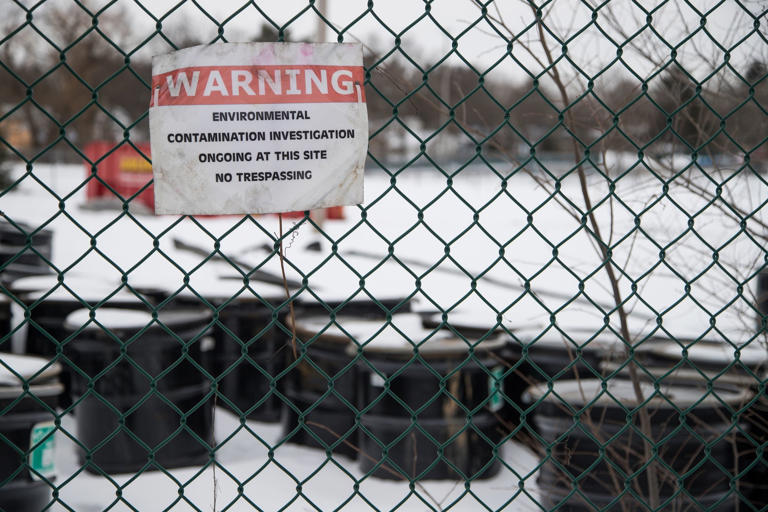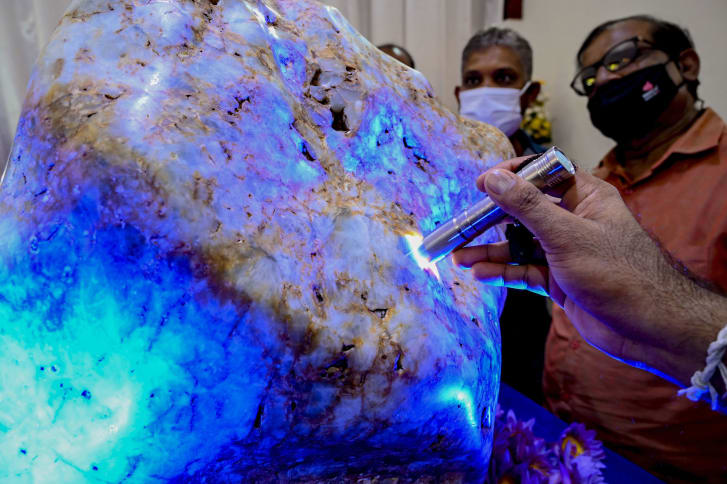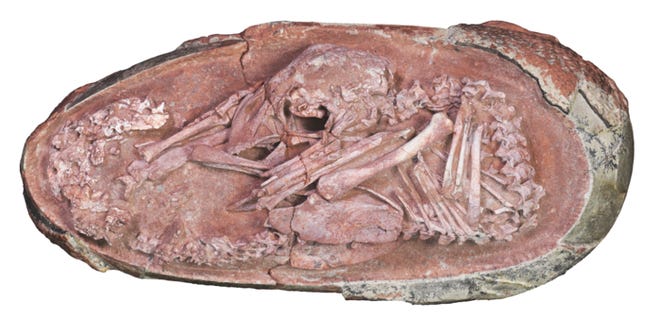Do you know what's in your blood? New EPA docs show widespread risk from common chemicals
Kyle Bagenstose, USA TODAY - 1h ago
Follow
React1 Comment|
After his father died in 2013 from a cancer that started in his kidney, Michael Hickey was troubled by more than his grief. John Hickey was 70, never smoked and rarely drank.
He did work a night shift at a Saint-Gobain textile plant in their hometown of Hoosick Falls, New York. The plant historically produced fabrics coated with a Teflon-like substance, similar to nonstick pans and other products. When a local schoolteacher also died from cancer shortly afterward, Hickey’s suspicions skyrocketed.
“We seemed to have a ton of this cancer, and I didn’t know what was going on,” he said.
An internet search for "Teflon and cancer" opened a Pandora’s box of studies linking PFOA, a chemical in Teflon, to kidney cancer. He took samples of tap water from his home, his father’s home and a few local businesses, then shipped them to a Canadian laboratory for testing.
Each came back showing extremely high levels of PFOA. The discovery led to intervention by
all levels of government and a class action lawsuit by village residents against Saint-Gobain, prior owner Honeywell International, and 3M. The suit was settled this summer for $65 million, which will pay for loss in property values and medical monitoring for residents.
Now, scientists are warning that the dangers of PFOA and a sister chemical stretch far beyond contaminated communities like Hoosick Falls.
In fact, they threaten virtually every American.

© Courtesy of Michael HickeyJohn Hickey, center, with his sons, Michael Hickey, right, and Jeff Hickey during a family vacation to the Badlands of South Dakota in 2012. It was a bucket list trip for John; his family booked it two weeks after learning he had stage 4 cancer. He died six months later.
New documents released by the U.S. Environmental Protection Agency draw the startling
conclusion that PFOA is a “likely carcinogen,” with essentially no safe level of exposure.
Startling because scientists have known for two decades that small amounts of PFOA and similar chemicals are in the blood of more than
98% of Americans. Startling because they affirm independent research that indicates the chemicals are measurably driving up rates of kidney cancer, weakening
immune systems and possibly even causing tens of thousands of low-birthweight babies each year.
And startling because scientists say it means the EPA’s 5-year-old advisory for safe levels of the chemical in drinking water no longer appears adequate.
It could take years for the EPA to develop a new advisory. Even then, the agency will have to weigh the benefits of filtering out chemicals against the costs – which could stretch into the billions for water utilities across the country.
Yet in the meantime, Americans will continue to consume chemicals that could be harming them, said Scott Faber, senior vice president of the Washington, D.C.-based nonprofit Environmental Working Group. Through
tracking public records, the organization found that at least 1,700 water supplies across the country contain PFOA.
“Tens of millions if not hundreds of millions of Americans are drinking a chemical that’s now even more strongly linked to cancer,” Faber said.
And experts warn there’s a much bigger picture. Drinking water is only one source of PFOA. Before PFOA and PFOS – a similar chemical also reviewed in the new EPA documents – were phased out of U.S. manufacturing in 2015, Americans were primarily exposed through common household products such as pots and pans, rain gear, carpets and food packaging. The virtually indestructible substances still remain in the environment and in animals consumed by humans, such as fish.
The widespread exposures add enough PFOA to the blood of an average American to be of concern, regardless of their drinking water, said Philippe Grandjean, a researcher at the Harvard T.H. Chan School of Public Health.
Often, the chemicals’ harm may not be obvious, he said. For example, it may manifest itself as a child who can’t seem to stay out of the doctor’s office with another cold.
“We see that mothers are recording that more often their kids are sick if they have higher prenatal or postnatal exposure to PFOA,” Grandjean said. “This is already harming populations.”
Read more on the topic: New Jersey approves drinking water standards for toxic PFAS chemicals
Federal fued: White House, CDC spar over study of toxic chemicals in drinking water
And PFOA is only one of hundreds of chemicals within a wider class called per- and polyfluoroalkyl substances (PFAS). While PFOA and PFOS have been phased out, replacement PFAS chemicals are now in circulation. Some researchers warn early analysis shows they may also cause some of the same toxic effects.
“It’s as bad as it sounds. I don’t think we can sugarcoat this,” Faber said. “PFAS are a public health emergency that touches many more Americans than have been touched by lead pipes or other really urgent health risks.”
Some companies that produced or used PFAS argue that the science isn't settled.
A spokesperson for 3M, which along with DuPont has faced lawsuits over production of the chemicals across the U.S., told USA TODAY it believes the "weight of evidence" from its own studies and other independent research "does not show these substances cause adverse health outcomes" in the general population.
The EPA told USA TODAY, however, that its new documents concluded the risks from the chemicals are real.
"The new data and analyses in EPA’s draft documents indicate that the toxicity values (for PFOA and PFOS) are much lower than previously understood – including near zero for certain health effects," the agency said.

© Junfu Han, Detroit Free PressResearchers and regulators have known for decades about the potential for harm from chemicals like PFOS and PFOA, but concern was often focused on sites of heavy contamination like this tannery in Rockford, Michigan. New EPA documents conclude PFOA has essentially no level of exposure.
‘This is a bit overdue’
The discovery of PFAS in the blood of everyday Americans happened by chance more than half a century ago. It has taken a new generation of scientists to understand what it may be doing to our health.
While working as a researcher at the University of Rochester in the late 1960s, Donald Taves was interested in studying a relatively new development: the addition of fluoride to drinking water.
He took a sample of his own blood and ran it through a machine that can detect incredibly small amounts of chemicals. What he saw
surprised him.
“I found this extra fluorine,” Taves said, and it was more than could be attributed to fluoridation of drinking water.
A colleague checked samples from more than 100 donors at five blood banks in New York and Texas and found the excess fluorine there, too.
“It seemed likely it was some sort of contaminant in the environment,” Taves said. “And that’s when I called 3M.”
Taves’ instincts were right, and his discovery kicked off a decades-long reckoning. The PFAS chemicals companies such as 3M and DuPont were using in their consumer products were slipping into the blood of hundreds of millions of Americans.
Unlike fluoride found in drinking water, PFAS are synthetic and bind fluorine to carbon molecules, forming one of the strongest bonds in chemistry. That means the chemicals don’t degrade, accumulating in the environment and in human bodies.
Kyle Steenland, an epidemiologist at Emory University in Georgia, is one of the present-day researchers trying to find out what threat that poses.
In the 2000s, Steenland served on a panel of independent scientists that studied 70,000 people along the West Virginia-Ohio border who were exposed to high levels of PFOA from a local DuPont plant. After years of study, Steenland said in three separate studies that researchers found “consistent evidence of kidney cancer” – the same illness that befell John Hickey in Hoosick Falls.
In addition, Steenland and his colleagues found “
probable links” between PFOA and diagnosed high cholesterol, ulcerative colitis, thyroid disease, testicular cancer and pregnancy-induced hypertension.
Scott Bartell, a researcher at the University of California, Irvine, began studying the levels at which PFOA might cause kidney cancer. What
he found added to the concern. PFOA didn’t appear to be dangerous only at the levels found in highly exposed populations like in Hoosick Falls and West Virginia but also at levels permissible in drinking water everywhere.
In 2016, the EPA created an advisory level for the chemical in drinking water of no more than 70 parts per trillion (ppt). But Bartell’s
calculations showed that somebody drinking the chemical at that amount for a decade faced a 16% higher risk of developing kidney cancer than someone drinking none.
Of even greater concern, Bartell said, the new EPA documents determine PFOA may be even more carcinogenic than his study found. “This is a bit overdue,” Bartell said of the findings in the documents EPA released in November. “It confirms things that many of us already thought were the case.”
The EPA’s findings are also significant to Tracey Woodruff, director of the Reproductive Health and the Environment program at the University of California, San Francisco.
Her research suggests that the average American woman has enough PFOA in her blood to account for about an ounce of lost birthweight in a baby.
On an individual basis, that may not sound like much. But for mothers whose babies are on the margin for clinically low birthweight – 5.5 pounds – it could be critical, Woodruff said. The risks also increase for those with additional PFOA in their blood. If the millions of women whose PFOA blood levels rank in the top half nationwide instead had only the average amount, as many as 40,000 fewer babies would be born at low birthweight each year, Woodruff's research estimated.
Though that research was completed years ago, Woodruff echoed other researchers in saying the new EPA documents took a similar approach and have now reached similar conclusions.
“This review essentially confirms those findings,” Woodruff said.
Asked further about 3M's reaction to the EPA's new documents, a company spokesperson pointed to earlier reviews by the U.S. Centers for Disease Control and Prevention, the International Agency for Research on Cancer and other government health agencies that did not definitively find a cause-and-effect relationship between PFAS and human health effects.
The company also pointed out that studies show the amount of PFOA and PFOS in the blood of the average American is
declining.
DuPont de Nemours, a corporate entity spun off from the original DuPont in 2019, said only that the company does not "make or use" PFOA or PFOS in its products and otherwise supports the EPA's development of "science-based" regulations.
Saint-Gobain, the textile company in Hoosick Falls, said it never manufactured the chemicals, instead obtaining them from third-party vendors. In addition to the legal settlement made this summer, the company has paid for new filtration systems for public drinking water in Hoosick Falls, a spokesperson said.
What’s next?
After a board of scientists peer-reviews the EPA’s new documents, the agency will need to determine a safe limit for the chemicals. The agency has set a goal for the fall of 2022, with regulation going into effect a year later.
A spokesperson also told USA TODAY the agency is moving "as quickly as possible" to update its health advisories in the interim.
The EPA could ultimately decide to set the safe limit at effectively zero, requiring drinking water utilities to filter out any detectable amount of the chemicals. Or it could decide that the costs of doing so outweigh the benefits. The agency will hold its first
public hearing on that process at 12 p.m. Thursday.
While the Environmental Working Group and others advocate for strict regulation of the chemicals, the American Water Works Association, a nonprofit representing water utilities across the country, is urging a cautious approach to those calculations.
The lower EPA makes the limit, the more utilities will have to spend on new sources of water or installing and maintaining treatment systems, said Steve Via, director of federal relations for the group. With costs for a single system often reaching millions of dollars, the total could reach into the billions.
“It’s a huge number,” Via said, adding that money is needed to address other risks like lead pipes. “At the end of the day, you’ve got to ask yourself, ‘Is this the best way to manage risk?’”
Other action could emerge from the court system. Rob Bilott is an Ohio-based attorney who sued DuPont and created the science panel that studied PFOA’s health effects in West Virginia. (Bilott was played by Mark Ruffalo in the 2019 film about the case, "
Dark Waters.")
Now he has filed a nationwide class action lawsuit in federal court to require that 3M, DuPont and other companies that used the chemicals pay for studies to determine their health effects. If approved, it would represent any American with PFOA and at least one other PFAS in their blood.
“We shouldn’t have to spend decades fighting in court to have this threat recognized – and to hold those companies that caused this mess responsible,” Bilott said. “The science is there. The public health threat is real.”






 .
.
